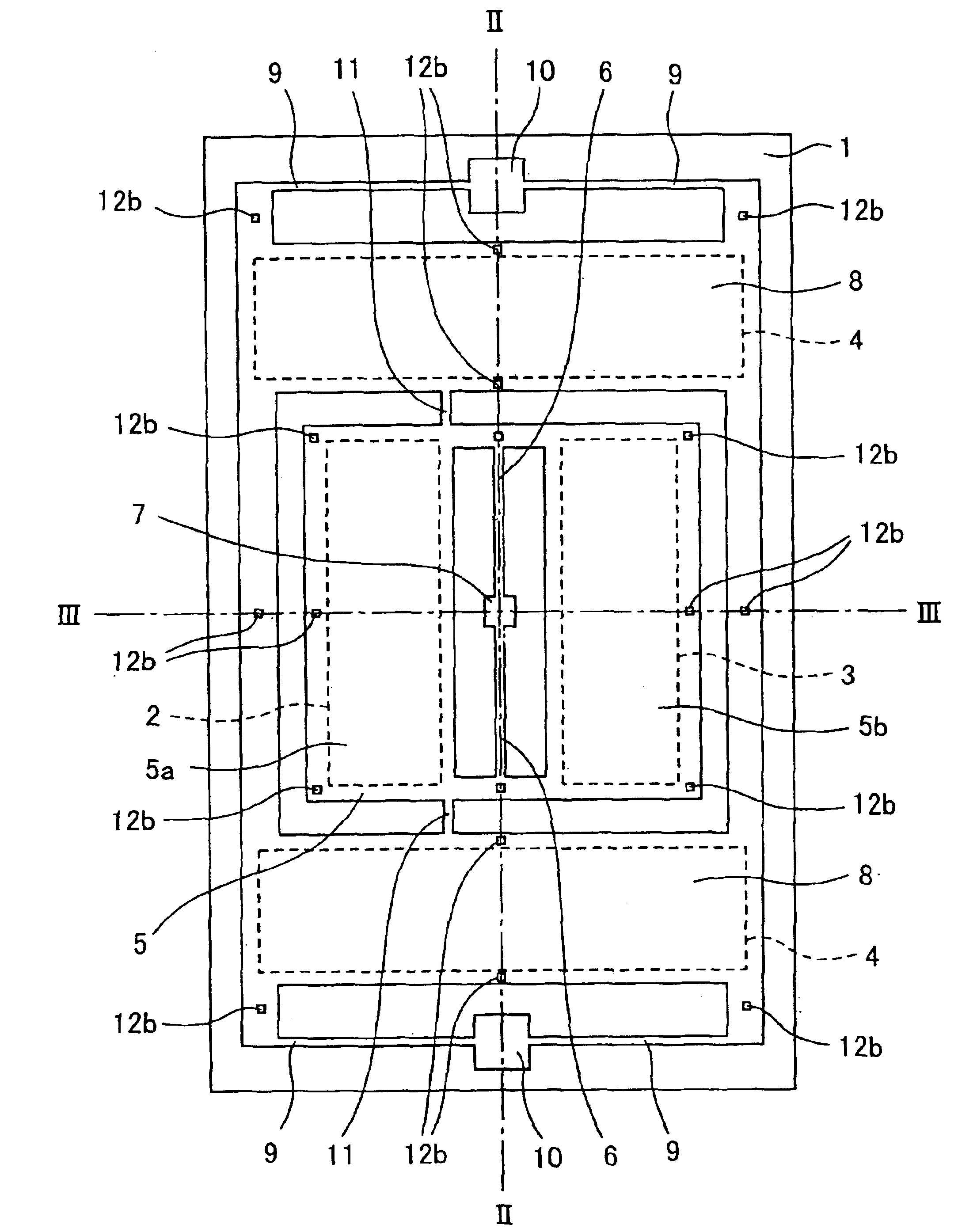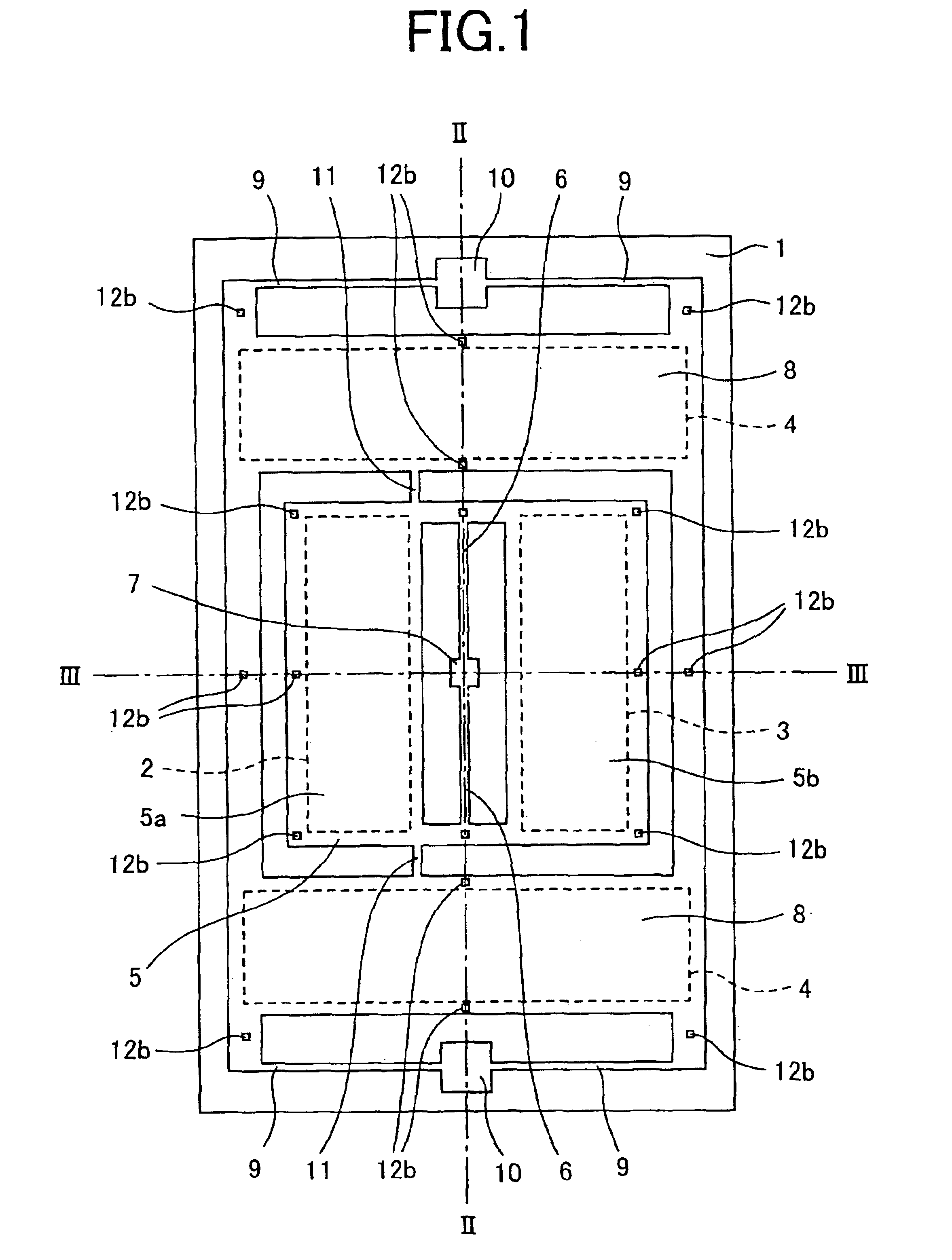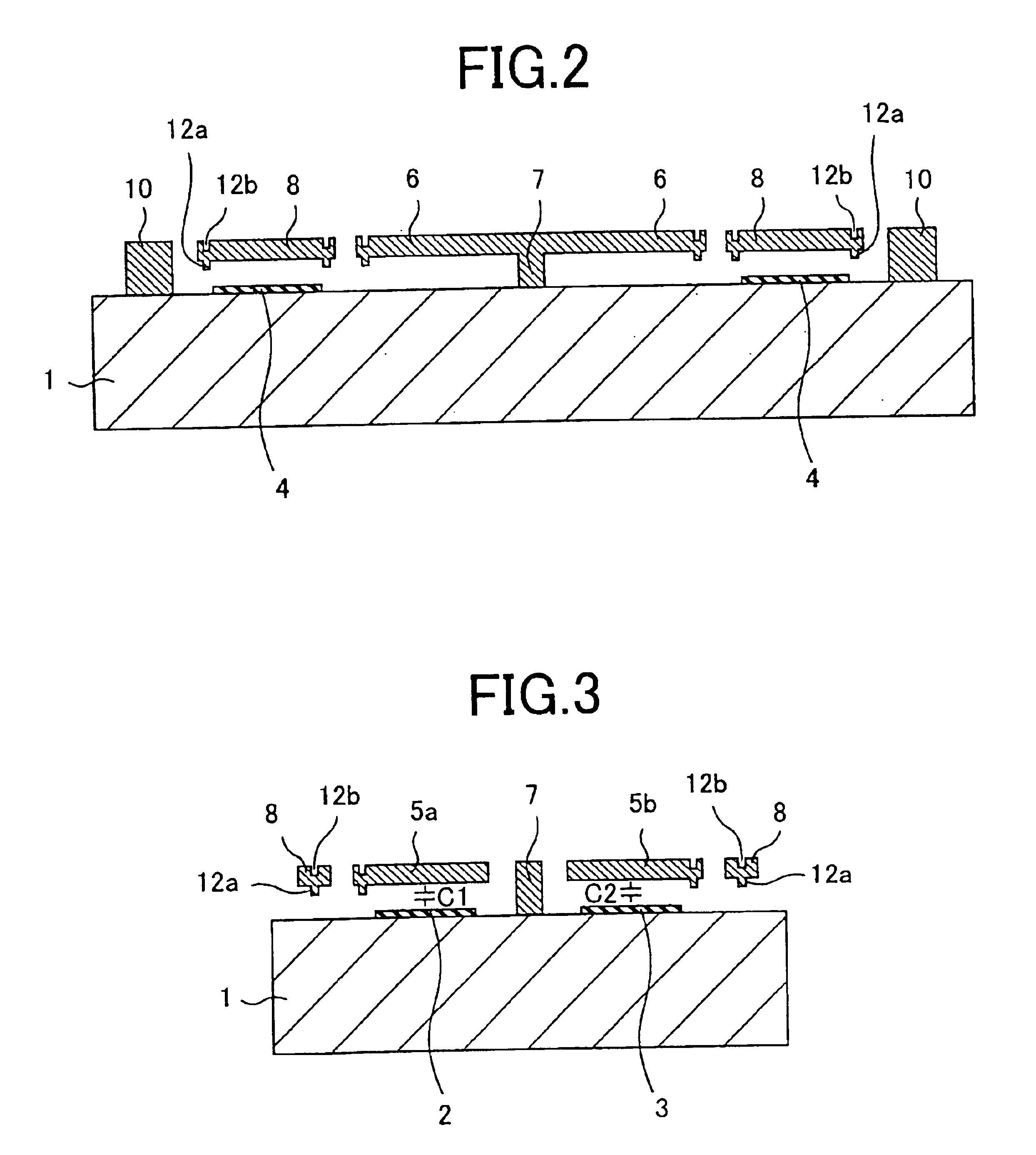Acceleration sensor
a sensor and acceleration technology, applied in the field of acceleration sensors, can solve the problems of extremely reduced contact between the movable electrode and the substrate, and achieve the effects of easy manufacturing of acceleration sensors, reduced mass of the movable portion, and easy destruction
- Summary
- Abstract
- Description
- Claims
- Application Information
AI Technical Summary
Benefits of technology
Problems solved by technology
Method used
Image
Examples
embodiment 1
[0058]FIG. 1 is a plan view of an acceleration sensor according to Embodiment 1 of the invention. FIGS. 2 and 3 are sectional views taken along lines II—II and III—III, respectively, in FIG. 1. A construction of the acceleration sensor according to Embodiment 1 of the invention will be described with reference to these diagrams. A reference numeral 1 indicates a silicon substrate. An insulating film is preferably provided on the surface. The insulating film is not shown for a simple description. A low-stress silicon nitride film deposited by LPCVD is suitable for the insulating film. A first fixed electrode 2, a second fixed electrode 3 and a self-diagnosis electrode 4 are provided on the silicon substrate 1. The first fixed electrode 2, second fixed electrode 3 and self-diagnosis electrode 4 can be formed simultaneously by etching a polysilicon film deposited by LPCVD method, for example.
[0059]A reference numeral 5 is a movable electrode. The movable electrode 5 is placed above the...
embodiment 2
[0084]FIG. 8 is a plan view of an acceleration sensor according to Embodiment 2 of the invention. FIGS. 9 and 10 are sectional views taken along lines IX—IX and X—X, respectively, in FIG. 8.
[0085]Embodiment 2 is characterized in that a correcting electrode 32 is provided by the side of a self-diagnosis electrode 4 provided on a silicon substrate 1 by facing against a mass 8, in that driving electrodes 35 and 36 are provided near a first fixed electrode 2 and a second fixed electrode 3 provided on the silicon substrate 1 by facing against a movable electrode. 5, and in that a supporting bar 38 having a bending portion 37 is provided as a supporting bar for elastically supporting the mass 8 with respect to the silicon substrate 1 and the supporting bar 38 elastically supports the mass 8 with respect to the silicon substrate 1 through an anchor 39.
[0086]In FIGS. 8 to 10, the same reference numerals as those shown in FIGS. 1 to 7 indicate the same elements as those according to Embodime...
embodiment 3
[0094]FIG. 12 is a plan view of an acceleration sensor according to Embodiment 3 of the invention. FIGS. 13 and 14 are sectional diagrams taken along lines XIII—XIII and XIV—XIV, respectively, in FIG. 12.
[0095]In Embodiments 1 and 2, various electrodes are formed on the silicon substrate 1 by using a polysilicon film. Embodiment 3 is different from Embodiments 1 and 2 largely in that the various electrodes are formed of a metal thin film or monocrystal silicon on a glass substrate.
[0096]In FIGS. 12 to 14, a reference numeral 51 indicates a glass substrate. A first fixed electrode 52, a second fixed electrode 53, a self-diagnosis electrode 54, a correcting electrode 55 and driving electrodes 56 and 57 made of a metal thin film such as that of aluminum and gold are provided on the glass substrate 51. A movable electrode 58 is provided above the first fixed electrode 52, the second fixed electrode 53 and the driving electrodes 56 and 57 by being spaced from and facing against them. The...
PUM
 Login to View More
Login to View More Abstract
Description
Claims
Application Information
 Login to View More
Login to View More - R&D
- Intellectual Property
- Life Sciences
- Materials
- Tech Scout
- Unparalleled Data Quality
- Higher Quality Content
- 60% Fewer Hallucinations
Browse by: Latest US Patents, China's latest patents, Technical Efficacy Thesaurus, Application Domain, Technology Topic, Popular Technical Reports.
© 2025 PatSnap. All rights reserved.Legal|Privacy policy|Modern Slavery Act Transparency Statement|Sitemap|About US| Contact US: help@patsnap.com



